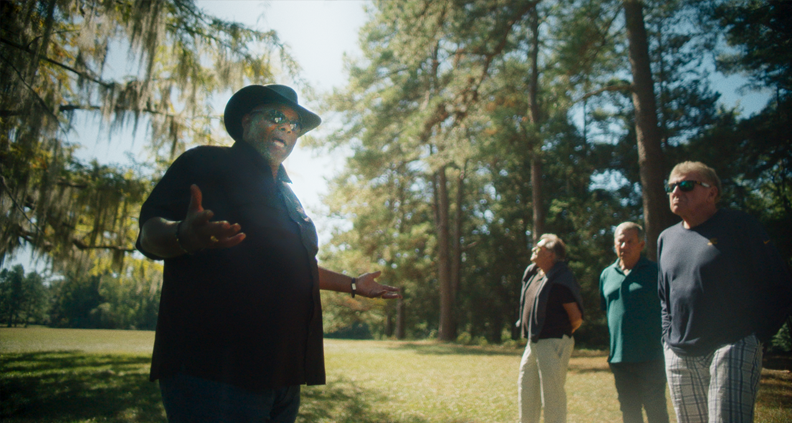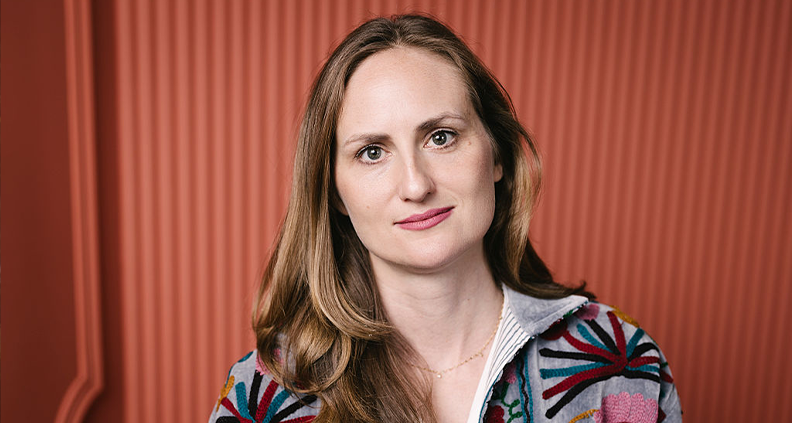INTERVIEW: ‘Natchez’ Director Suzannah Herbert on the Modern South & Her Documentary Story Lab Journey
Applications for the Film Independent Documentary Story Lab are now open. The deadline for non-Members is December 15th, while Film Independent Members have until January 5th.
Director Suzannah Herbert grew up in Memphis, Tennessee. The public schools she went to there never taught her the infamous ‘Lost Cause’ narrative. The narrative frames the Confederacy as a noble cause that met a tragic end and was taught in Southern schools for decades after the Civil War.
While the education system is in the process of devolving, remnants of the Confederacy and antebellum era are still pervasive throughout the South. Herbert wanted to explore how that pervasive myth still weighs on the South’s collective psyche, and found the antebellum tourist capital, Natchez, Mississippi, a perfect microcosm. The city was changing, and struggling with how and if it wanted to evolve.
We spoke with Herbert about those explorations in her upcoming documentary Natchez, and how the film was shaped by the Film Independent Documentary Story Lab.
Tell me about the genesis of this film and your connection to Natchez.
Growing up in the South, the ideas of the Confederacy, and the mythology around the Civil War, it’s just everywhere, and you can’t help but be exposed to it. It was something that I was always wondering about.
In 2017, I was invited to a wedding on a plantation and was struck by how people, to this day, are still using sites for their profit, their enjoyment, their entertainment. I wanted to question that and try to understand it in a film. I started researching and reading a lot about the Civil War era, the antebellum era, the times during slavery.
Then I went on a road trip with my mom from Memphis down to Louisiana, to River Road, where there’s a lot of plantations along the Mississippi River. And I just started taking a lot of tours, and visiting historic sites and plantations, and talking to friends, and friends of friends, and they all told me to go to Natchez.
I had never been to Natchez. It was a place that was very well preserved in terms of antebellum structures. For the past hundred years, the white homeowners have been selling the myths of the Old South during ‘Pilgrimage,’ a time when they open their homes to the public for tours.
But now there are people in Natchez who are trying to do the work to break that down, and to tell a more truthful history and talk about slavery, to tell the truth. The film shows us both of those perspectives, and the many ways in which history is told there.
It’s a film about a town, and that involves a lot of different people. Can you tell me about choosing who to feature, and if that changed during the process of filming?
We had friends of friends in Natchez. I met Tracy, the Southern Belle in the blue dress, at a cocktail party. She was just so warm, interesting, and open. She didn’t grow up in this world. She grew up poor in Louisiana on a farm and when she put the dress on, it made her feel like she belonged to a Southern aristocracy. When she put the dress on, it made her feel like she belonged.
Then I went to the visitor center just to get brochures, and meet people, and Rev was there. He recruited me onto his tour van, just like he recruits the women in the film onto his van. And I was blown away by the tour and the history that he was telling. And I knew immediately that, wow, this person is incredible and his work needs to be captured.

I want to talk to you about some of the aesthetic with both the music and the cinematography. They create this dreamy quality that’s both beautiful and accentuates the uncomfortableness. Tell me about the thought process for both of those.
Noah Collier shot the film, and we had conversations early on about how to show the beauty of Natchez and the horror, the feeling of the place. We wanted to draw people in, just like the town does, through the beauty, but then slowly peel back the layers of this complicated, fraught history and place.
We looked at a lot of fiction and narrative films like Gone with the Wind, White Lotus, Night of the Living Dead, and Nashville,. We wanted to make an antidote to Gone with the Wind.
We shot everything on a tripod to make it feel more like a performance and more like a narrative film. We shot with vintage prime lenses to harken back to the 60s when Pilgrimage was in its heyday.
We wanted the film to be, at first, like a fantasy. But then that fantasy slowly turns into something more deep and sinister when the reality of the history is revealed through the tours and through the participants. So that’s when we started to employ tilted angles a bit, as the reality surfaces..
James Newberry was our composer. And he is from Georgia, so he totally got the subtleties and the nuances of the film and how we were trying to subvert narratives, stereotypes, and clichés about the South and about Southerners. That was really important for us.
James also took a lot of risk, and he does cool, weird things and does them in a really beautiful way. We both wanted the music to feel like something is slightly amiss but not have it overtly lead you in any direction.
I wanted to know about getting the community comfortable with you. You’re coming into their homes with a camera, and you’re going to put their town out into the world. Did you get met with some skepticism?
I spent a lot of time in Natchez without a camera so before we started filming. I think that the white community saw themselves in me, and so that made people feel pretty comfortable.
I filmed for 75 days. Noah Collier, my cinematographer, and I were there for many, many weeks. And I think that’s what it took in order to get the intimacy of those moments.
It was never my intention to make a hit piece about the South, because I love the South, in spite of all of its complications. When you love something, and when it’s home, you try to make it better. My hope was with this film is that it raises questions,starts dialogue, and elicits introspection for people.
Where were you with the film when you applied for the Documentary Story Lab, and what made you want to apply to it?
When I applied, we were pretty far through production. At that point we had shot the vast majority of our days, and we were gearing up for the edit. I knew that the Lab would be an essential time to have mentors and fellow peers help me realize the story.
At the beginning of an edit, when you shot so many hours and days, you just have a mountain of footage to wrap your head around. With the people that Film Independent would bring together, it seemed like an invaluable opportunity, and it was.

Over the course of doing the lab, did some of the ideas for the film change? How did the film look different from the beginning to the end?
When the lab begins, you all send your rough cut and ours was a two-and-a-half-hour assembly. It was incredibly helpful to see, in discussing it with everyone, what resonated and what I knew we could not get rid of because of the group’s response.
And I think another thing that was affirming was that I was worried that we had too many characters. I remember people unanimously being like, no, this will work, you need to just figure out how to balance it all, but do not cut people. That kind of gave me the confidence to trust my gut in that regard and not whittle it down, but instead embrace the complexity that each person brought to the tableau of the film.
For someone applying to the lab next year, what advice would you give to them? Sort of, like, on their application?
I was pleasantly surprised at the Lab with just how much it felt like going back to school. When was the last time I got to learn for a week and listen to experts in the field?
It was beautiful to be in this environment where I had the permission to learn and to do it alongside other incredible filmmakers who I’m still in touch with. So I would just tell someone to embrace this time, because it’s very rare and special.
Natchez will have it’s LA premier in February 2026.
Applications for the Film Independent Documentary Story Lab are now open. The deadline for non-Members is December 15th, while Film Independent Members have until January 5th.
Film Independent Artist Development promotes unique independent voices by helping filmmakers create and advance new work. To become a Member of Film Independent, just click here. To support us with a donation, click here.
Keep up with Film Independent…